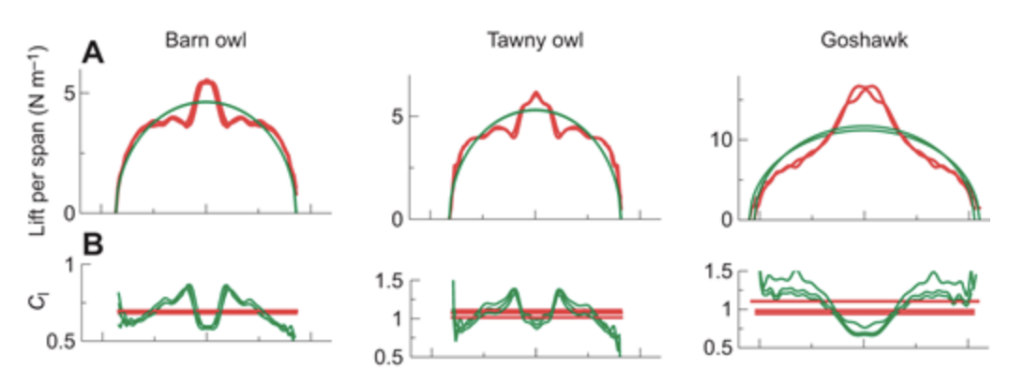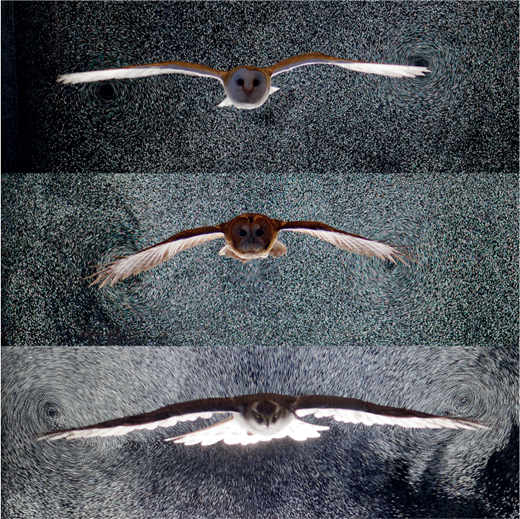Bird tails clearly perform many roles, both in terms of display and as aerodynamically active surfaces. The potential aerodynamic roles performed by bird tails can be divided into manoeuvrability, stability, lift production and drag reduction through a variety of mechanisms (Thomas, 1996; Maybury and Rayner, 2001; Huyssen et al., 2012). These functions often have opposing demands: it is difficult to enhance both manoeuvrability and static stability; lift production often comes at the cost of increased drag.
Conventional aircraft tails act as rudders, elevators and stabilizers, providing moments about the centre of mass to initiate and maintain turns, and restoring moments that correct perturbations from trimmed, level flight. Bird tails have a quite different form, lacking the vertical fin of typical aircraft. Further, tails are not a requirement for competent, manoeuvrable flight for flapping animals: birds without tails are still able to achieve some – albeit ungainly – level of control, and many bats are functionally tailless. Flying animals differ markedly from traditional fixed wing aircraft in a number of ways: they flap, they have rapid sensing and complex control capability, and they are, at least in some gliding cases, aerodynamically unstable (Durston et al., 2019; Durston, 2019).
Here, by tracking up to 20,000, 0.3 mm neutrally buoyant soap bubbles behind a gliding barn owl, tawny owl and goshawk, we found that downwash velocity due to the body/tail consistently exceeds that due to the wings. The downwash measured behind the centreline is quantitatively consistent with an alternative hypothesis: that of constant lift production per planform area, a requirement for minimizing viscous, profile drag. Gliding raptors use lift distributions that compromise both inviscid induced drag minimization and static pitch stability, instead adopting a strategy that reduces the viscous drag, which is of proportionately greater importance to lower Reynolds number fliers.
Flights selected for analysis were steady, broadly level glides at relatively low speeds (Table 1). Motion of the seeding bubbles revealed trailing vortices in the wake of the wingtips, clearly visible in the photographs (Fig. 1) and movies (Movie 1). These vortices were tracked and quantified (Movie 2), and are displayed using isosurfaces of the wake Q-value (Figs 3 and 4). Trailing vortices behind the wing tips associated with downwash following the birds – and the momentum flux resulting in weight support – are not surprising, and entirely match expectations from aerodynamic theory and experience from aeronautics. What is more noteworthy is that discrete trailing vortices were also consistently observed in the wake behind the body and tail (Figs 1, 3 and 4).

Reflexive Analysis
This article provides some beautiful imagery in their photographs of the birds flying through the soap bubbles. These images also show the movement of the air around the birds’ bodies revealing some forms I found interesting in that they reflect convection cells.
There’s a breadth of hard science here that could be useful to later revisit, as well as many graphs that are useful in understanding flight. A few of the graphs also are interesting to me aesthetically, as they remind me of flight or the general shape of a bird. 3d visualizations of the air disruptions from the birds here also draw my mind towards fluid dynamics and the relation of swimming to flying.

Sources
Usherwood, J. R., Cheney, J. A., Song, J., Windsor, S. P., Stevenson, J. P. J., Dierksheide, U., Nila, A., & Bomphrey, R. J. (2020, February 10). High aerodynamic lift from the tail reduces drag in gliding raptors. The Company of Biologists. https://journals.biologists.com/jeb/article/223/3/jeb214809/223686/High-aerodynamic-lift-from-the-tail-reduces-drag




